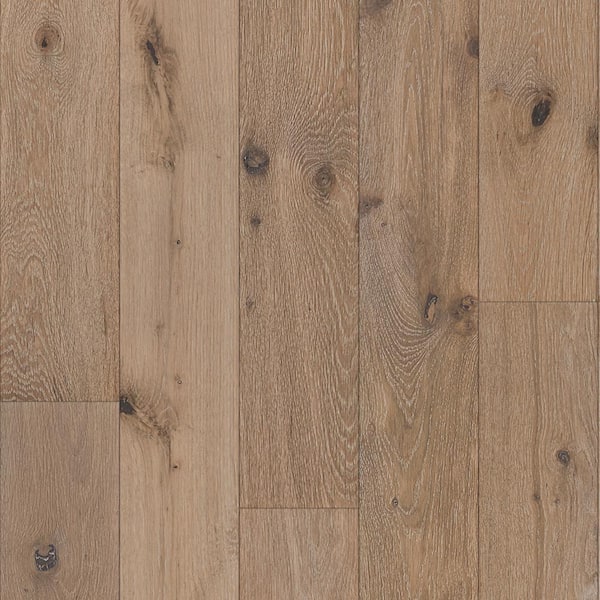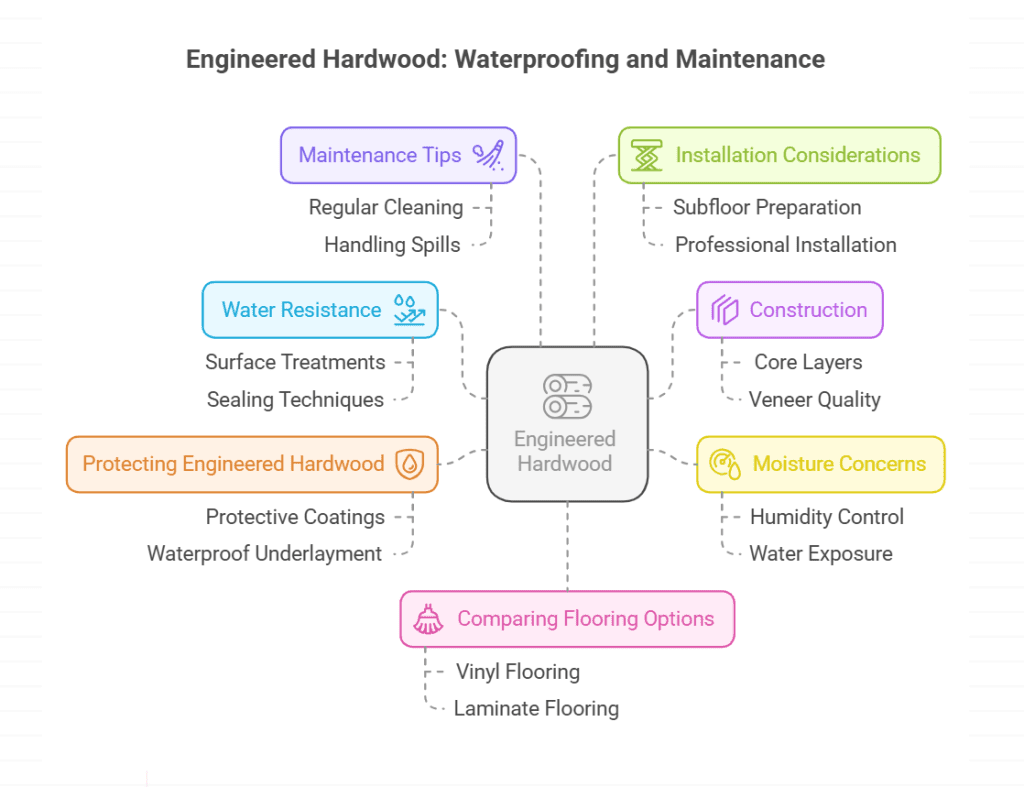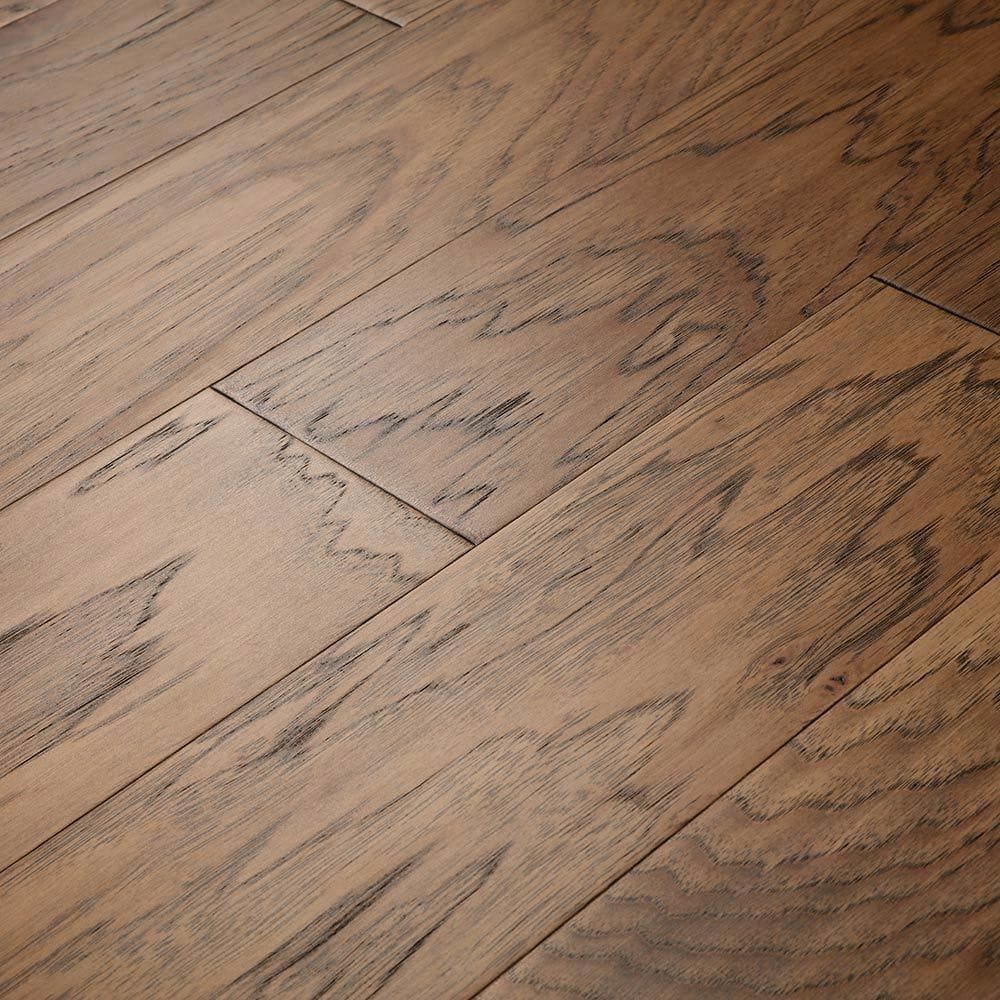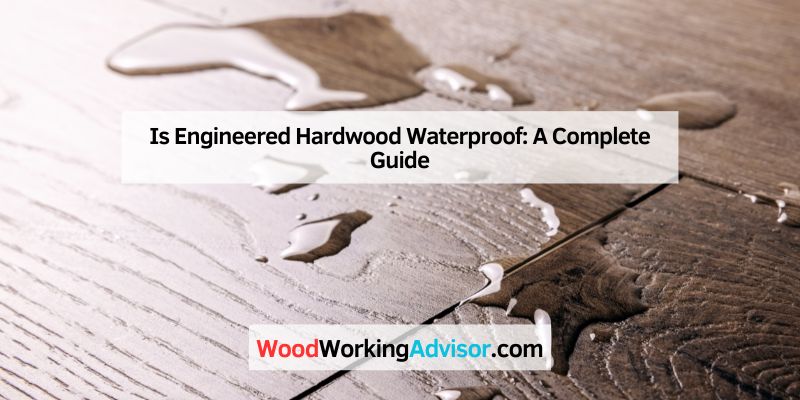Engineered hardwood is not fully waterproof. While it is more water-resistant than solid hardwood, it cannot withstand prolonged exposure to water.
Engineered hardwood flooring is a popular choice for many homeowners. It combines the beauty of real wood with better durability. But, a common question arises: “Is engineered hardwood waterproof? ” Understanding this is crucial, especially for spaces prone to moisture like kitchens and bathrooms.
This introduction will explore the nature of engineered hardwood, its construction, and how it handles water exposure. Knowing the limits of its water resistance can help you make informed decisions for your home. Let’s dive into the details of engineered hardwood and its ability to resist water.

Credit: villagiowoodfloors.com
Introduction To Engineered Hardwood
Engineered hardwood is a type of flooring. It is made from layers of wood. The top layer is real hardwood. The layers below are wood products. These layers are pressed together. This makes the floor strong and stable. It looks like solid hardwood. But it is less likely to warp.
Solid hardwood is one piece of wood. Engineered hardwood has many layers. Solid hardwood can warp with water. Engineered hardwood is more stable. It handles changes in temperature better. This makes it a good choice for many homes. Solid hardwood can be refinished many times. Engineered hardwood can be refinished once or twice. It depends on the thickness of the top layer.
Water Resistance Of Engineered Hardwood
Engineered hardwood is water-resistant but not waterproof. Water-resistant means it can handle small spills. Waterproof means it can withstand water for long periods. Engineered hardwood can resist water to some extent. But it can get damaged if water sits on it.
Several factors affect the water resistance of engineered hardwood. Quality of the wood is important. Higher quality wood has better resistance. Finish also plays a role. A good finish can protect the wood. Installation matters too. Proper installation can prevent water damage.
Construction Of Engineered Hardwood
Engineered hardwood has multiple layers. The top layer is real wood. It gives the floor a natural look. Beneath this, there are layers of plywood or fiberboard. These layers make it strong and stable. They help the floor resist changes in temperature and moisture. The number of layers can vary. More layers mean more strength.
The core layer is very important. It is usually made of plywood or fiberboard. This layer provides stability. It helps the floor stay flat. It also makes the floor more durable. A strong core layer can help with moisture resistance. But it does not make the floor completely waterproof. Always be careful with water on engineered hardwood.

Credit: www.homedepot.com
Moisture Concerns
Engineered hardwood can face moisture issues. Spills and humidity can cause problems. Warping is a common issue. Swelling can happen too. Stains may appear if water sits. Mold can grow in damp spots.
Look for discoloration on floors. Buckling is a major sign of damage. Soft spots can mean water damage. Gaps between boards are another clue. Musty smell is a sign of mold. Peeling finish may show water issues.
Protecting Engineered Hardwood
Using sealants can help protect engineered hardwood. They add a protective layer. This layer resists water and spills. Choose a high-quality sealant. Apply it evenly on the surface. Make sure to follow the manufacturer’s instructions. Reapply the sealant as needed.
Place rugs in high-traffic areas. They reduce wear and tear. Clean spills immediately. Use a damp cloth for this. Avoid using too much water. Water can damage the wood. Use furniture pads to prevent scratches. Keep the room’s humidity level stable. A dehumidifier can help with this.

Maintenance Tips
Using sealants can help protect engineered hardwood. They add a protective layer. This layer resists water and spills. Choose a high-quality sealant. Apply it evenly on the surface. Make sure to follow the manufacturer’s instructions. Reapply the sealant as needed.
Place rugs in high-traffic areas. They reduce wear and tear. Clean spills immediately. Use a damp cloth for this. Avoid using too much water. Water can damage the wood. Use furniture pads to prevent scratches. Keep the room’s humidity level stable. A dehumidifier can help with this.
Using sealants can help protect engineered hardwood. They add a protective layer. This layer resists water and spills. Choose a high-quality sealant. Apply it evenly on the surface. Make sure to follow the manufacturer’s instructions. Reapply the sealant as needed.
Place rugs in high-traffic areas. They reduce wear and tear. Clean spills immediately. Use a damp cloth for this. Avoid using too much water. Water can damage the wood. Use furniture pads to prevent scratches. Keep the room’s humidity level stable. A dehumidifier can help with this.
Using sealants can help protect engineered hardwood. They add a protective layer. This layer resists water and spills. Choose a high-quality sealant. Apply it evenly on the surface. Make sure to follow the manufacturer’s instructions. Reapply the sealant as needed.
Place rugs in high-traffic areas. They reduce wear and tear. Clean spills immediately. Use a damp cloth for this. Avoid using too much water. Water can damage the wood. Use furniture pads to prevent scratches. Keep the room’s humidity level stable. A dehumidifier can help with this.
Engineered hardwood needs proper installation. This ensures durability. Follow manufacturer’s instructions. Use the right tools. Check moisture levels. High moisture can damage wood. Ensure subfloor is dry. Use a moisture barrier. This prevents water damage. Glue down or float the floor. Both methods work well. Keep expansion gaps. Wood expands and contracts. Gaps prevent buckling.
Engineered hardwood suits many areas. Living rooms are perfect. Bedrooms too. Avoid bathrooms and kitchens. High moisture can ruin floors. Basements can work. Use a moisture barrier. Keep humidity low. Engineered hardwood can enhance your home. Choose the right area for best results.
Comparing Flooring Option
Engineered hardwood looks like real wood. It has a thin layer of real wood on top. Laminate flooring has a photo of wood under a clear layer. Both are durable, but engineered hardwood feels more real. Laminate is more scratch-resistant.
Engineered hardwood costs more. It can be sanded and refinished. Laminate cannot be refinished. Water can damage both types, but laminate is more water-resistant. Choose based on your needs and budget.
Vinyl flooring is made of plastic. It can look like wood or stone. Engineered hardwood has a real wood top layer. Vinyl is 100% waterproof. This makes it better for wet areas. Engineered hardwood is more natural and warm.
Vinyl is easier to install. It costs less than engineered hardwood. Both are durable and good options. Think about where you will use it. Choose what fits your style and needs.

Credit: www.builddirect.com
Frequently Asked Questions
Can Engineered Hardwood Get Wet?
Engineered hardwood can get wet, but prolonged exposure to moisture can cause damage. Wipe up spills promptly to avoid issues.
What Are The Negatives Of Engineered Wood Flooring?
Engineered wood flooring can be prone to scratches. It may warp in high humidity areas. It typically has a shorter lifespan than solid wood.
Is Engineered Hardwood More Waterproof Than Hardwood?
Engineered hardwood is more water-resistant than traditional hardwood. Its layered construction provides better stability against moisture. It is not completely waterproof, so spills should still be cleaned promptly.
What Is The Most Water Resistant Wood Flooring?
The most water-resistant wood flooring is engineered hardwood with a water-resistant finish. It combines durability and moisture resistance.
Conclusion
Engineered hardwood offers many benefits but isn’t completely waterproof. It handles moisture better than solid wood. It can withstand occasional spills. Yet, standing water can cause damage. Use it in areas with low moisture. Always clean up spills quickly. Consider your needs before choosing.
Proper care extends its life. Choose wisely for a beautiful, lasting floor.

